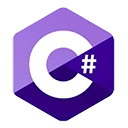Entity Framework (EF) is an object-relational mapping (ORM) framework that simplifies database programming in C#. It allows developers to work with databases using C# objects and LINQ queries, abstracting the underlying database complexity. In this guide, you'll learn the basics of Entity Framework and how to get started with it.
What is Entity Framework?
Entity Framework is an open-source ORM framework developed by Microsoft. It enables developers to interact with relational databases using strongly-typed C# objects, eliminating the need to write complex SQL queries for common database operations. EF provides a high-level abstraction over the database, making data access more convenient and productive.
Setting Up Entity Framework
Before you can use Entity Framework, you need to set up your project and install the necessary NuGet packages. Let's assume you're working with a Visual Studio project.
Step 1: Create a C# Project
Create a new C# project in Visual Studio if you don't already have one. You can choose either a console application, a Windows Forms application, or any other type of project based on your needs.
Step 2: Install Entity Framework
Open the NuGet Package Manager Console in Visual Studio and run the following command to install Entity Framework:
Install-Package EntityFramework
Step 3: Create a Model
Create your data model by defining C# classes that represent the tables in your database. These classes will become your Entity Framework entities. For example:
using System;
using System.ComponentModel.DataAnnotations;
public class Product
{
public int ProductID { get; set; }
[Required]
public string Name { get; set; }
public decimal Price { get; set; }
}
Step 4: Create a Database Context
Create a database context class that inherits from `DbContext`. This class represents your database and provides a bridge between your C# code and the database. Define a `DbSet` property for each entity you want to work with:
using System.Data.Entity;
public class AppDbContext : DbContext
{
public DbSet<Product> Products { get; set; }
}
Performing Basic Database Operations
With Entity Framework set up, you can perform common database operations such as inserting, updating, querying, and deleting data using C# code. Here's an example of inserting a new product:
using System;
class Program
{
static void Main()
{
using (var context = new AppDbContext())
{
// Create a new product
var newProduct = new Product
{
Name = "Sample Product",
Price = 19.99m
};
// Add the product to the database
context.Products.Add(newProduct);
// Save changes to the database
context.SaveChanges();
Console.WriteLine("Product added to the database with ID: " + newProduct.ProductID);
}
}
}
Querying Data
You can use LINQ queries to retrieve data from the database. For example, to retrieve all products with a price greater than $10:
using System;
using System.Linq;
class Program
{
static void Main()
{
using (var context = new AppDbContext())
{
var products = context.Products
.Where(p => p.Price > 10)
.ToList();
Console.WriteLine("Products with price > $10:");
foreach (var product in products)
{
Console.WriteLine($"{product.ProductID}: {product.Name} - {product.Price:C}");
}
}
}
}
Conclusion
Entity Framework simplifies database programming in C# by providing a high-level, object-oriented interface to relational databases. You've learned the basics of setting up Entity Framework, creating a model, and performing common database operations. As you continue your programming journey, you'll explore advanced topics in EF, including migrations, relationships, and optimization techniques.
Practice using Entity Framework to build data-driven applications more efficiently and to manage database interactions in a C# environment.

